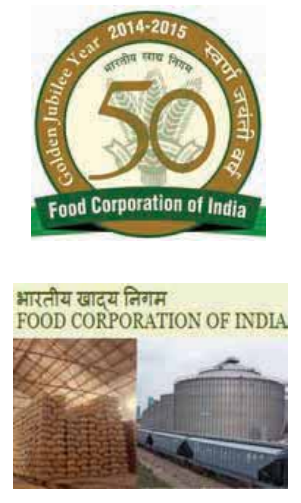Chapter: 11th Commerce : Chapter 13 : Warehousing
Warehousing in India
Warehousing in India
India is an agrarian country but the
importance of warehousing was not felt till 1950. Agriculture contributes
16 percent of the overall GDP and accounts
for employment of approximately 52 percent of the Indian population. It is
estimated that more than 40 percent of our agricultural productions wasted due
to poor storage facilities.
On the recommendation of the All India
Rural Credit Survey Committee, the Agricultural Produce(Development and
warehousing) Corporation Act enacted in 1956, authorized the
Government to setup National Co-operative
Development and Warehousing Board to
develop agricultural Co-operatives and warehousing.

Main Warehousing Agencies in the Public Sector
The three main agencies in the public
sector engaged in providing large scale warehousing facilities are:
A. Food Corporation of India (FCI)
It provides storage facilities for food
grains. Food Corporation of India also hires storage capacity from other
sources such as Central Warehousing
Corporation, State Warehousing Corporation and private parties. The available
storage capacity of Food Corporation of India is 74.6 million tonnes. (August
28, 2013 Government told in Lok Sabha). The FCI was set-up under the Food
Corporation Act 1964, in order to fulfil following objectives of the food
policy:
i.
Distribution of food grains throughout
the country for public distribution system.
ii.
Effective price support operations for
safeguarding the interests of farmers.
iii.
Maintaining satisfactory level of
operational and buffer stocks of food grains to ensure National food security.
B. Central Warehousing Corporation (CWC)
It was established in 1957. The
available storage capacity of Central Warehousing Corporation is 11.17 million
tonnes and with the operation through 464 warehousing centers across the
country. (as on 30th September, 2017).
Functions of Central Warehousing
Corporation:
i.
To provide agency services for scientific
storage of agricultural produce, seeds, manures fertilizers, agricultural
implements and other notified commodities.
ii.
To issue a negotiable warehouse receipt
for procuring credit to the owners of goods.
iii.
To preserve the produce deposited with
care and protect against insects and various pests and deterioration due to
moisture and dampness.
iv.
To act as an agent of the
government for the purchase and sale,
storage and distribution of specified commodities and transport to and from
warehouse.
v.
To reduce the cost of storage and
facilitate the marketing of produce through proper grading.
C. State Warehousing Corporation (SWC)
Every state government is given power to
establish its own Warehousing Corporation after getting approval from the CWC.
50% of the capital is contributed by the CWC and the balance 50% contributed by
State Government.
D. Tamil Nadu Warehousing Corporation (TNWC)
It was established in 1959. The
available storage capacity of TNWC is 6.83 Lakh MT with 7 Regional offices and
256 Godowns across the state. It is one of the biggest public warehouses
operating in the state, offering logistic services to a diverse group of
clients.
Related Topics